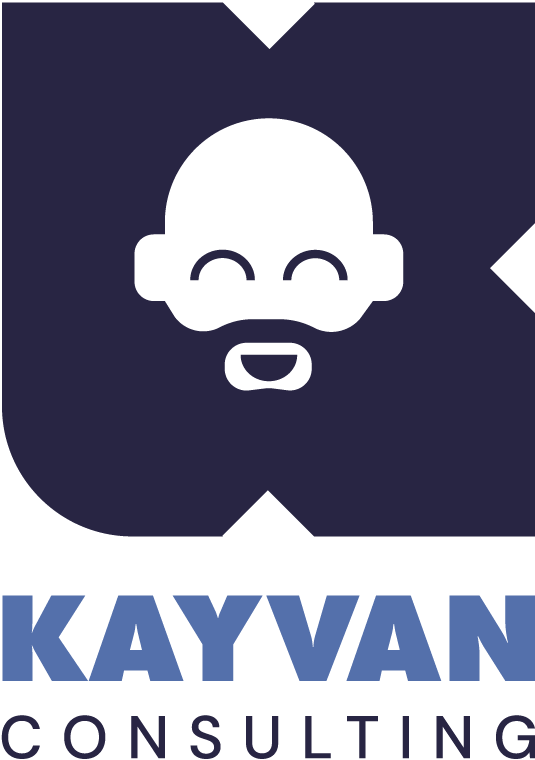Table of Contents
Introduction: The Silver Lining in Employee Turnover
Employee turnover is a reality of the modern workplace. According to the U.S. Bureau of Labor Statistics, over of 3 million Americans quit their jobs each month, and this trend isn’t slowing down. Whether employees leave for career advancement, better opportunities, or personal reasons, resignations are an inevitable part of business.
Losing a good employee can feel like a major setback. When a valued team member resigns, it’s easy to focus on the immediate disruption—the loss of experience, the added workload, and the uncertainty ahead.
But what if managing employee turnover was more than just damage control—what if it was an opportunity?
Instead of seeing departures as purely negative, forward-thinking leaders use them as a chance to improve team dynamics, enhance workplace culture, and strengthen overall operations.
In this article, we’ll explore how to navigate losing good employees, effectively handle employee resignations, and ultimately turn employee turnover into a positive force for your organization.

1. Shifting Your Perspective: Why Losing Good Employees Can Be an Opportunity
It’s easy to see an employee’s departure as a problem—especially if they were a top performer. But every resignation is also a chance to reassess team dynamics and company processes. If the loss of one person creates a major gap, it might indicate an over-reliance on a single role or a lack of succession planning.
Instead of reacting with frustration, use this moment as a wake-up call. Look at the big picture:
- Are responsibilities spread efficiently among your team?
- Is your company providing clear career paths that encourage employees to grow internally?
- Could this be an opportunity to rethink hiring priorities or restructure the role?
Key takeaway: Handling employee resignations with a strategic mindset ensures your company adapts and strengthens instead of just scrambling to replace someone.

2. Maintaining Positive Relationships with Departing Employees
A common mistake managers make is taking resignations personally. Whether an employee is leaving for a better salary, career growth, or personal reasons, it’s essential to stay professional and maintain strong relationships.
Why It’s Important:
- Employees who leave on good terms may refer new talent to your company in the future.
- They might return later as a boomerang employee, bringing back even more experience.
- Their departure expands your network—you never know when a former employee might become a client, partner, or advocate for your business.
To keep things positive:
✅ Congratulate them on their new opportunity instead of expressing disappointment.
✅ Offer to stay connected and provide a reference if needed.
✅ Avoid burning bridges—you never know when paths might cross again.
This approach not only improves your company’s reputation but also helps with managing employee turnover more effectively.
3. Celebrating Employee Achievements Before They Leave
Instead of seeing a resignation as a loss, treat it as a chance to celebrate contributions. Recognizing employees for their hard work ensures they leave with positive memories, making them more likely to recommend your company in the future.
Ways to Celebrate Departing Employees:
- Host a farewell event – It doesn’t have to be elaborate, just a small gathering to acknowledge their impact.
- Publicly acknowledge their work – A LinkedIn post or internal company email can show appreciation.
- Provide a personalized farewell gift or note – Something simple like a handwritten thank-you can leave a lasting impression.
A well-handled farewell boosts morale among remaining employees, reinforcing the idea that employees are valued—whether they stay or go.
Pro tip: If turnover is frequent, consider revisiting your hiring process to ensure the right fit. Check out this guide on structured interviews to improve long-term retention.

4. Retaining Knowledge Before Employees Leave
One of the biggest risks of employee turnover is the loss of valuable institutional knowledge. Without a solid transition plan, key insights can disappear overnight, leaving the team struggling to catch up.
How to Ensure Knowledge Retention:
- Encourage departing employees to document their work—SOPs (Standard Operating Procedures) should be updated before they leave.
- Set up peer training—Have an existing employee shadow them during their final weeks.
- Record video training sessions—A simple screen recording of their daily processes can save future hires hours of onboarding time.
When handling employee resignations, making knowledge transfer a priority ensures continuity and long-term stability.
Related: Need to improve knowledge retention in hiring? Read about behavioral interviewing techniques to build stronger teams.
5. Conducting Effective Exit Interviews
Exit interviews are goldmines of insight if done correctly. They provide unfiltered feedback on why employees are leaving, what could be improved, and whether deeper workplace issues need addressing.
Best Practices for Exit Interviews:
✔ Use a neutral interviewer – Employees will be more open with HR or an external consultant than their direct manager.
✔ Ask open-ended questions –
- What prompted your decision to leave?
- What would have made you stay?
- Would you recommend this company to a friend? Why or why not?
✔ Look for patterns – If multiple employees cite the same concerns, address them proactively.
Exit interviews are a critical part of managing employee turnover, ensuring that departures lead to improvements rather than repeated mistakes.
Further reading: If hiring mistakes are causing frequent turnover, check out this guide on 8 Common Hiring Mistakes and How to Fix Them.

6. Rethinking Hiring Strategies Post-Departure
Before rushing to replace a departing employee, ask: Is this an opportunity to restructure?
Strategic hiring questions to consider:
- Can responsibilities be redistributed to improve efficiency?
- Should we hire someone with a different skill set to fill gaps?
- Would hiring a junior employee and training them internally be a better long-term investment?
Taking the time to rethink hiring ensures your next hire is not just a replacement—but a step forward for the company.
Need help structuring better hiring processes? Explore this interview training program to improve hiring decisions.

Conclusion: Turning Employee Turnover Into a Positive
Losing good employees isn’t always easy, but when approached with the right mindset, it becomes an opportunity. By managing employee turnover effectively, handling employee resignations with care, and focusing on knowledge retention, company culture, and strategic hiring, organizations can thrive—even in times of transition.
Instead of fearing change, embrace it as a catalyst for growth. A well-handled departure isn’t a loss—it’s an opportunity to level up your team, your processes, and your company’s future. 🚀
How do I handle losing a key employee?
The best approach is to stay professional, express gratitude, and ensure a smooth knowledge transfer. Avoid reacting emotionally, and instead, focus on handling employee resignations with a structured transition plan. Assign a team member to shadow them, update documentation, and conduct an exit interview to gather insights on how to improve retention.
👉 If hiring replacements has been challenging, check out this guide on 8 Common Hiring Mistakes and How to Fix Them.
Should I make a counteroffer to retain a resigning employee?
It depends on why they’re leaving. If the resignation is salary-related, a counteroffer might work. However, if the reason is poor leadership, lack of career growth, or workplace culture, a counteroffer is usually a short-term fix—they may still leave later. Instead, focus on long-term retention strategies like career development, competitive benefits, and a positive work environment.
What’s the best way to ensure knowledge transfer before an employee leaves?
To retain knowledge effectively:
✅ Have them document key processes (Standard Operating Procedures).
✅ Conduct hands-on training with a team member who will take over their role.
✅ Record training videos to preserve expertise.
Lack of structured hiring can lead to frequent departures. Improve your hiring process with structured interview techniques.
How can I maintain relationships with former employees?
Networking doesn’t stop when an employee leaves. Stay in touch on LinkedIn, offer references, and consider boomerang hires—employees who leave and later return with new skills. Former employees can also become clients, business partners, or referral sources.
How can I turn an employee departure into an opportunity?
Instead of rushing to hire a replacement, step back and reassess:
– Can we redistribute tasks internally?
– Should we redefine the role to fit evolving business needs?
– Is this an opportunity to hire someone with new skills to enhance the team?
Strategic hiring leads to stronger teams in the long run. Need better hiring practices? Explore interview training for hiring teams to build a high-performing workforce.
What should I do if multiple employees leave at once?
A sudden wave of resignations can signal bigger workplace issues. Conduct exit interviews to identify trends, address leadership or culture concerns, and focus on improving employee engagement.
If turnover is frequent, review how your hiring process impacts retention. Read about behavioral interviewing techniques to attract candidates who fit your culture.



